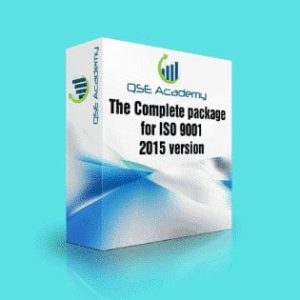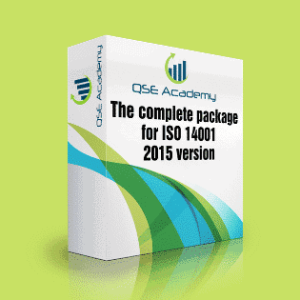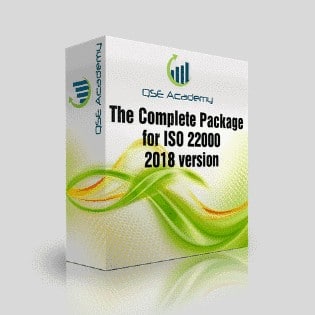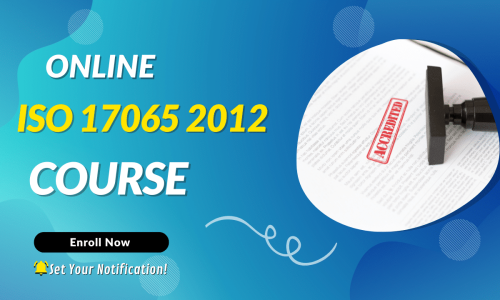FSSC 22000 V6 Gap‑Analysis Checklist
FSSC 22000 V6 Gap‑Analysis Checklist
Why Every FSSC 22000 Project Starts with a Gap Analysis
Before any documentation or training plan begins, there’s one step that separates smooth certifications from chaotic ones — the gap analysis.
Over the years, I’ve seen countless food manufacturers and packaging plants dive straight into implementation without checking where they actually stand. The result? Missed clauses, duplicated documents, and stress before the audit.
At QSE Academy, we’ve helped hundreds of food-chain organizations transition to FSSC 22000 V6, and we always start with one question: “What’s working, and what isn’t?”
That’s exactly what a gap analysis answers.
In this guide, I’ll show you how to:
- Use a practical checklist to evaluate your current system.
- Identify gaps against ISO 22000:2018, ISO/TS 22002-x, and FSSC V6 additions.
- Turn findings into a structured action plan.
If you do this right, you’ll enter your certification audit knowing exactly what to expect — and what’s already fixed.
Understanding the Role of a Gap Analysis in FSSC 22000 V6
A gap analysis isn’t just paperwork; it’s your reality check. It bridges the difference between what the standard expects and what your facility is currently doing.
Think of it as your baseline audit — not for blame, but for clarity.
It tells you whether your management system truly meets the latest FSSC V6 requirements or just looks good on paper.
Here’s why it matters:
- It reveals hidden weaknesses early, before an auditor finds them.
- It helps you prioritize actions by impact, not guesswork.
- It gives leadership measurable progress data.
Pro Tip: Treat your first gap analysis like a diagnostic scan. You’ll use it again later to measure improvements.
Common Mistake: Teams often do this once and move on. But Version 6 adds evolving elements — like food-safety culture and quality control — that require periodic reassessment.
Step-by-Step Approach — How to Conduct an Effective Gap Analysis
The process doesn’t need to be complicated. Follow these clear steps:
- Define your scope and team.
Cover all sites, shifts, and process categories. Assign one person to lead, and others to assess PRPs, CCPs, documentation, and operations. - Review the standards.
You’ll need three references:- ISO 22000:2018 — your FSMS backbone.
- ISO/TS 22002-x — your industry-specific PRP.
- FSSC 22000 V6 Additional Requirements — everything new in Version 6.
- Use a clause-by-clause checklist.
For each requirement, rate it:- ✅ Compliant
- ⚠️ Partially Compliant
- ❌ Not Compliant
- Gather evidence.
Don’t rely on memory. Review records, talk to employees, and observe activities. - Summarize in a matrix.
Clause → Status → Action → Responsible → Deadline.
Example:
Clause 8.4.2 – Traceability: Procedure exists, but no recall test conducted.
Action: QA Lead to schedule simulation by Week 5.
Pro Tip: Color-code your matrix (green/yellow/red). It helps management spot high-risk areas instantly.
Common Pitfall: Overloading one person with all tasks. Divide responsibilities — shared ownership makes the process real, not theoretical.
Key Areas to Include in Your FSSC 22000 V6 Gap-Analysis Checklist
When we build checklists for clients, we group them into five key areas:
1. Food-Safety Management System (ISO 22000:2018)
- Context of the organization
- Leadership commitment
- Risk-based thinking
- Documented information
- Management review
2. PRP Programs (ISO/TS 22002-x Series)
- Hygiene and housekeeping
- Equipment design and maintenance
- Cleaning and sanitation
- Pest management
- Waste handling
3. FSSC 22000 V6 Additional Requirements
- Food-safety culture initiatives
- Quality control and quality plans
- Allergen management
- Transport and storage hygiene
- Food defense and fraud prevention
- Environmental monitoring
4. Operational Controls & Monitoring
- CCP validation
- Calibration and verification
- Product traceability and recall simulation
- Handling nonconformities
5. Improvement & Continual Review
- Internal audits
- Corrective and preventive actions
- Trend analysis
- Management involvement
Common Pitfall: Missing the “new” parts of Version 6 — especially quality control and communication with certification bodies after recalls. Auditors focus on these updates first.
Turning Gaps into an Action Plan
A checklist is only useful if it leads to action.
Once you’ve scored each clause, convert it into a corrective-action register.
Here’s how:
- Assign each gap to a responsible person.
- Set realistic deadlines.
- Track completion weekly.
- Prioritize high-risk areas (e.g., allergens, traceability, supplier approval).
Use your action plan as part of your FSSC 22000 project dashboard.
That way, you can monitor progress and link it to your upcoming internal audits.
Pro Tip: Update your checklist after every audit or management review. It keeps your system living and evolving.
Real-World Example — How One Company Used the Checklist
A mid-size snack manufacturer we worked with discovered during their first gap analysis that nearly half their supplier files lacked updated allergen declarations.
Instead of scrambling before the audit, they built a simple action plan — weekly supplier follow-ups, QA verification logs, and training for procurement staff.
By the time their Stage 2 audit came, those findings dropped to zero.
That’s the power of a structured gap-analysis checklist: visibility, accountability, and measurable progress.
FAQs — Clarifying the Process
Q1. How often should I perform a gap analysis for FSSC 22000 V6?
At least twice: once at project start and once before your Stage 1 audit. Many organizations repeat it annually as part of continuous improvement.
Q2. Is the FSSC 22000 V6 checklist the same for all industries?
Not exactly. Each sector has its own PRP standard — for example, ISO/TS 22002-1 for food manufacturing and ISO/TS 22002-4 for packaging. Choose the right one for your operations.
Q3. Who should conduct the gap analysis?
Ideally your Food-Safety Team Leader or an experienced consultant familiar with ISO 22000 and FSSC requirements. Independent eyes often catch what internal teams overlook.
Conclusion — Turn Insight into Action
The FSSC 22000 V6 Gap-Analysis Checklist isn’t just a tool; it’s your roadmap to audit-readiness.
It shows where you stand, what needs fixing, and how fast you can move toward certification.
If you’re ready to see where your system truly stands, download QSE Academy’s FSSC 22000 V6 Gap-Analysis Checklist and start measuring your compliance today.
Melissa Lavaro is a seasoned ISO consultant and an enthusiastic advocate for quality management standards. With a rich experience in conducting audits and providing consultancy services, Melissa specializes in helping organizations implement and adapt to ISO standards. Her passion for quality management is evident in her hands-on approach and deep understanding of the regulatory frameworks. Melissa’s expertise and energetic commitment make her a sought-after consultant, dedicated to elevating organizational compliance and performance through practical, insightful guidance.













